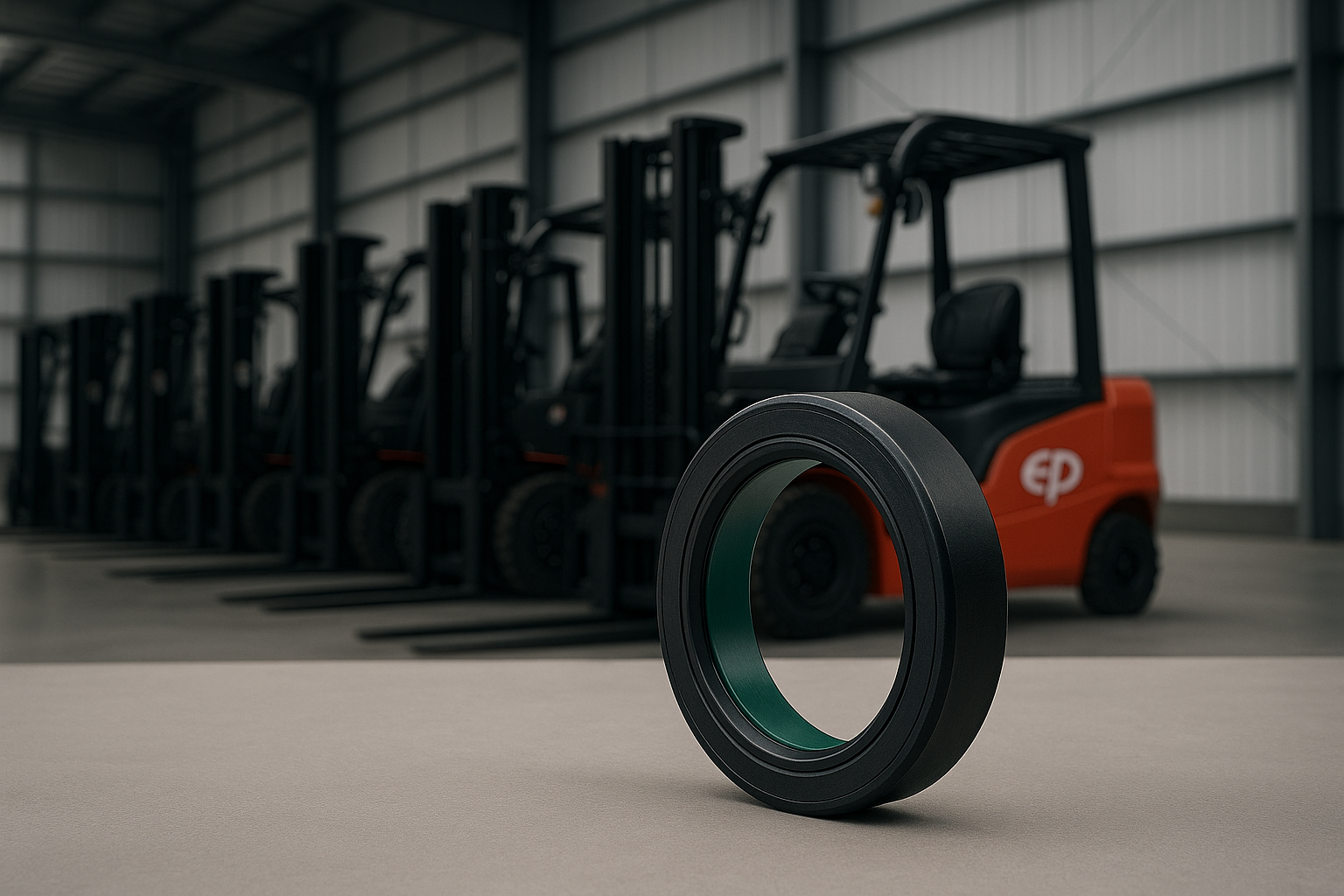What is a Forklift Oil Seal? Structure, Functions, and Signs of Damage
What is a Forklift Oil Seal? Structure, Functions, and Signs of Damage
What is a forklift oil seal?
The oil seal (also called a gasket or seal) is a crucial component in the hydraulic and drivetrain systems of a forklift. Though small, it plays a vital role in ensuring stable operation and preventing oil leaks. So, what is a forklift seal, what does it do, and when should it be replaced? Let’s find out in this article!
1. What is a forklift oil seal?
A forklift oil seal is a sealing ring made from rubber, NBR, PU, or other synthetic materials. These seals are typically installed in moving parts such as hydraulic cylinders, gearboxes, steering motors, etc., to prevent oil from leaking and to keep out dust and water.
2. Structure and application positions of forklift seals
Forklift seals come in various types, depending on the installation location. Common positions include:
-
Lift/lowering cylinder seal: Keeps hydraulic oil contained in the lifting system.
-
Tilt cylinder seal: Ensures smooth operation of the tilt function.
-
Gearbox seal: Prevents transmission oil from leaking at shaft joints.
-
Wheel axle seal: Protects bearings and transmission components from dust and water.
-
Hydraulic/steering motor seal: Keeps oil inside the motor from leaking.
3. Functions of a forklift seal
-
Oil sealing: Prevents hydraulic or transmission oil leaks.
-
Dust and water blocking: Shields internal components from contaminants.
-
Piston rod protection: Extends the lifespan of the hydraulic system.
4. Signs of a damaged forklift seal
Signs of seal failure include:
-
Oil leaks on the floor or around the cylinder rod.
-
Wet or oily piston rods.
-
Weak or jerky lifting performance.
-
Unusual noises or burnt oil smell.
5. How to handle and replace forklift seals
If you notice seal problems:
-
Inspect the oil leak location carefully.
-
Replace the seal with the correct model, size, and material.
-
If the cylinder rod is scratched, polish it or replace it to avoid damaging the new seal.
-
Use high-quality seals to reduce the need for frequent replacements.



